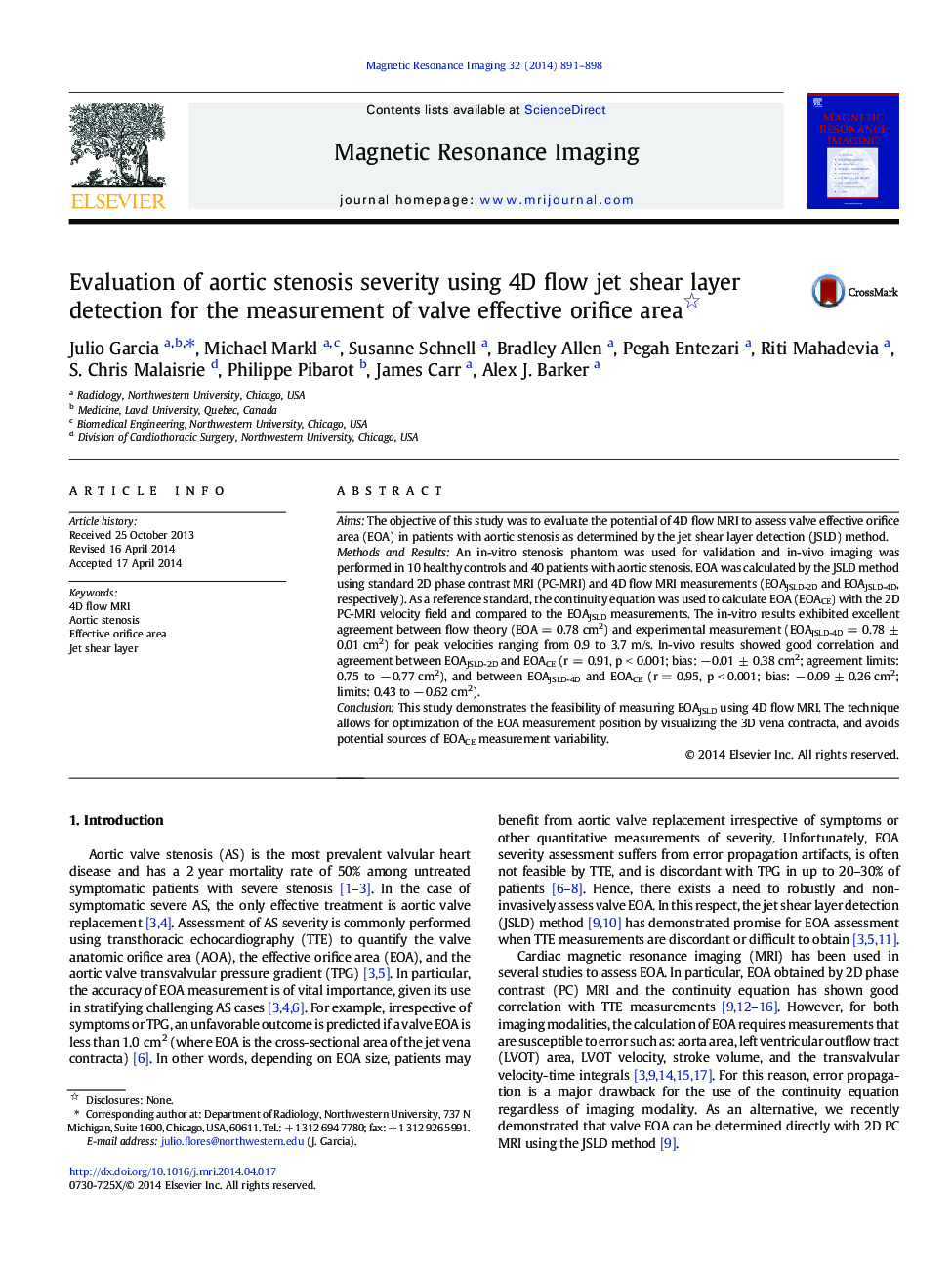| کد مقاله | کد نشریه | سال انتشار | مقاله انگلیسی | نسخه تمام متن |
|---|---|---|---|---|
| 1806421 | 1025206 | 2014 | 8 صفحه PDF | دانلود رایگان |

AimsThe objective of this study was to evaluate the potential of 4D flow MRI to assess valve effective orifice area (EOA) in patients with aortic stenosis as determined by the jet shear layer detection (JSLD) method.Methods and ResultsAn in-vitro stenosis phantom was used for validation and in-vivo imaging was performed in 10 healthy controls and 40 patients with aortic stenosis. EOA was calculated by the JSLD method using standard 2D phase contrast MRI (PC-MRI) and 4D flow MRI measurements (EOAJSLD-2D and EOAJSLD-4D, respectively). As a reference standard, the continuity equation was used to calculate EOA (EOACE) with the 2D PC-MRI velocity field and compared to the EOAJSLD measurements. The in-vitro results exhibited excellent agreement between flow theory (EOA = 0.78 cm2) and experimental measurement (EOAJSLD-4D = 0.78 ± 0.01 cm2) for peak velocities ranging from 0.9 to 3.7 m/s. In-vivo results showed good correlation and agreement between EOAJSLD-2D and EOACE (r = 0.91, p < 0.001; bias: − 0.01 ± 0.38 cm2; agreement limits: 0.75 to − 0.77 cm2), and between EOAJSLD-4D and EOACE (r = 0.95, p < 0.001; bias: − 0.09 ± 0.26 cm2; limits: 0.43 to − 0.62 cm2).ConclusionThis study demonstrates the feasibility of measuring EOAJSLD using 4D flow MRI. The technique allows for optimization of the EOA measurement position by visualizing the 3D vena contracta, and avoids potential sources of EOACE measurement variability.
Journal: Magnetic Resonance Imaging - Volume 32, Issue 7, September 2014, Pages 891–898